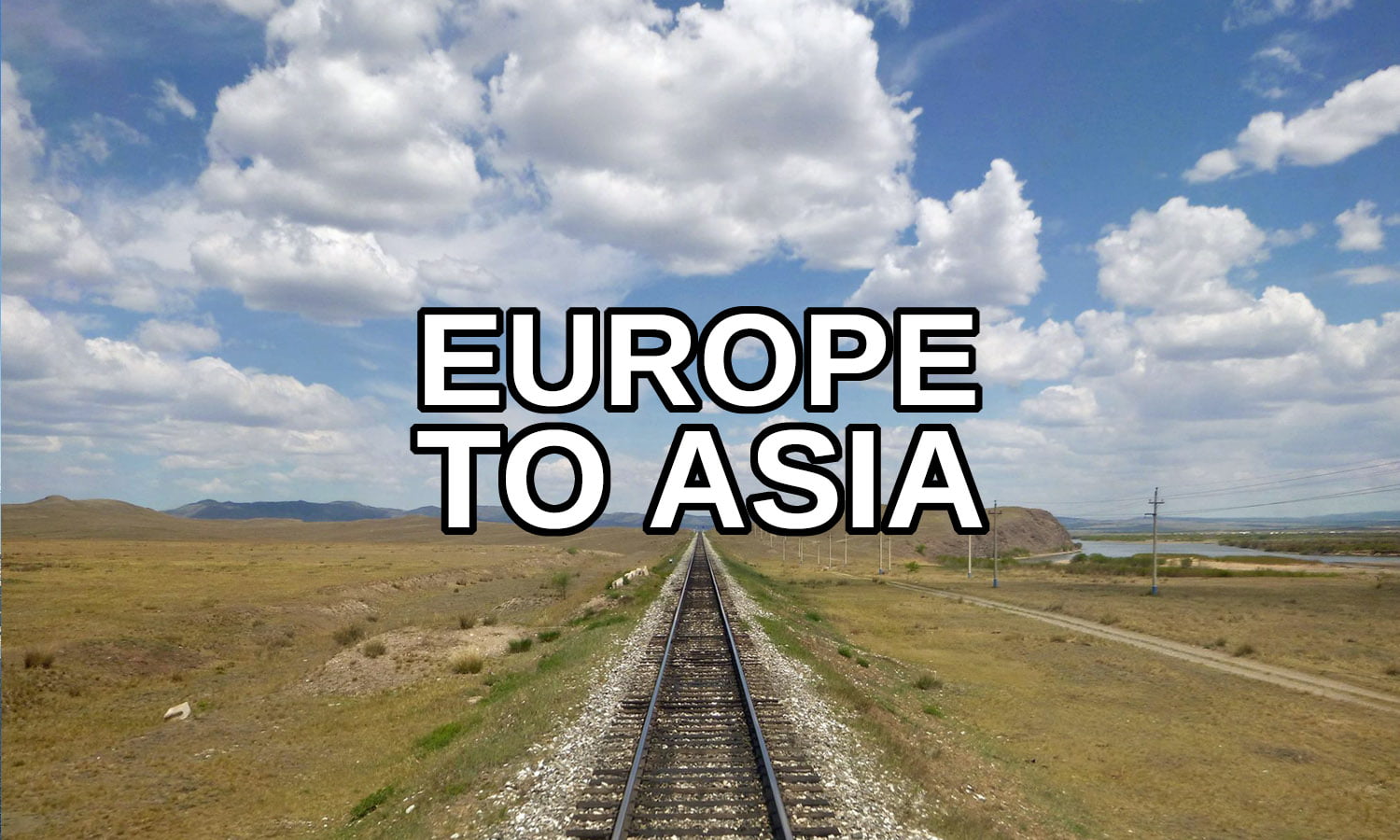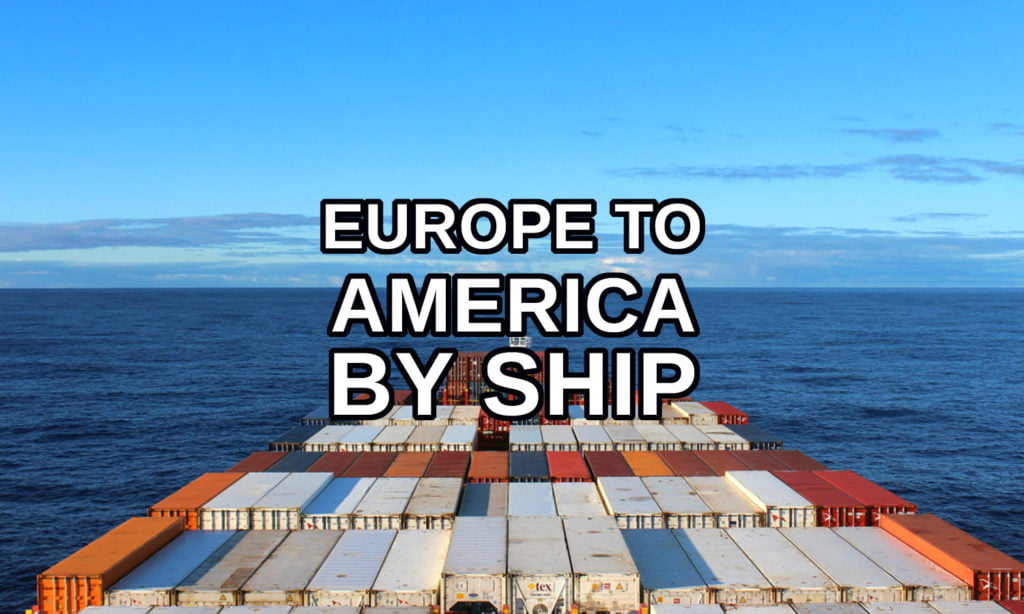How can you travel on a train from Europe to Asia? This guide lists land and sea routes from Europe to Africa.
We might consider Europe and Asia separate continents, but the distinction has no geographical basis. As they form a single continental area, traveling from Europe to Asia without flying is entirely possible. However, long distances and political issues increase the difficulty of the journey.
Let me guess: you found this guide while searching information about traveling on a train from Europe to Asia. In that case, you have come to the right place.
However, this guide is not just about train travel. Instead, I’m also covering other ways flightless ways to travel from Europe to Asia.
Here are five ways to get from Europe to Asia without flying, listed from north to south. These options include overland journeys such as trains from Europe to Asia as well as sea routes on cargo ships.
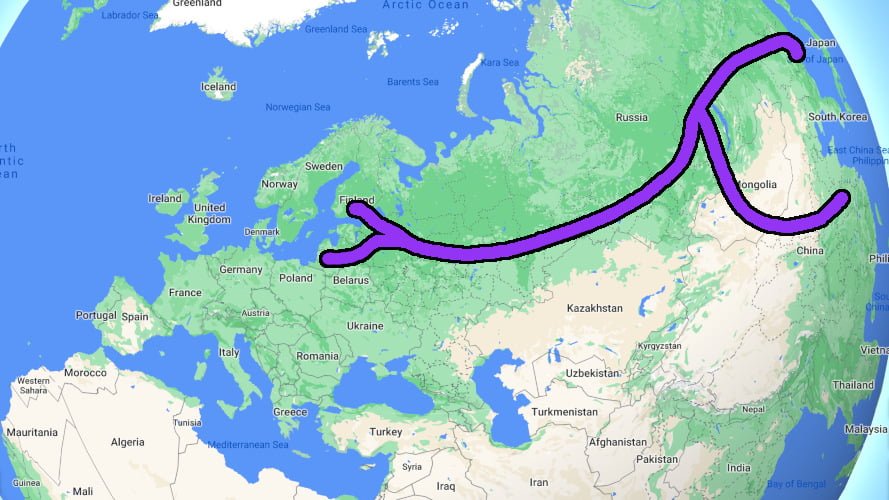
Option 1: Train Travel through Russia
Russia has vast train networks. This makes traveling on a train from Europe to Asia remarkably simple. You can get from Moscow to Beijing via Mongolia in just 6 days. You just need to work out your visas first.
There are two main routes from Europe to Asia through Russia by train. The Trans-Mongolian railway takes you to China, while the Trans-Siberian railway goes to Vladivostok on the eastern end of Russia. From Vladivostok, you can take a weekly ferry to Sakaiminato, Japan or to Donghae, South, Korea. The ferries take about 21 and 22 hours, respectively.
You can get from other parts of Europe to Russia overland. For example, my home country Finland has daily trains to russia. You can get from the capital Helsinki to Moscow in 15 hours. The website 4corners7seas.com has more information about flightless routes from Europe to Russia.
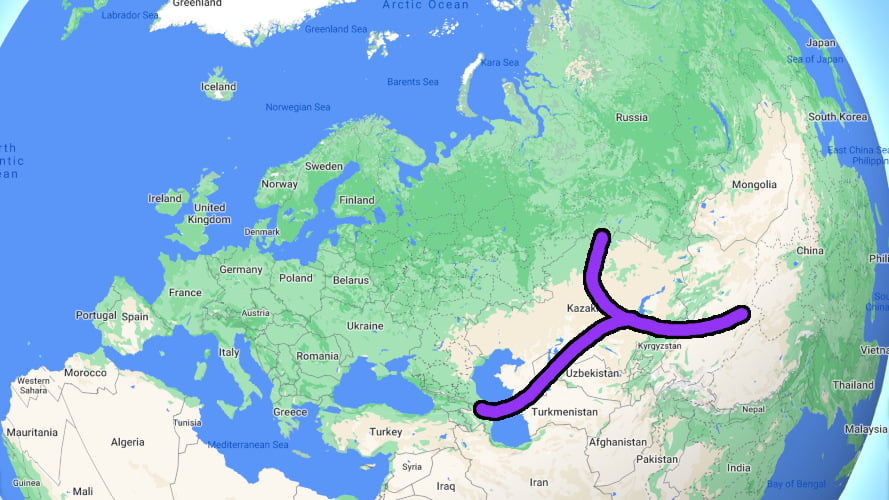
Option 2: Europe to Asia through Central Asia and China
It’s also possible to travel overland through Central Asian countries such as Kazakhstan to China. To reach Central Asia, you have two options.
First, you can enter Kazakhstan via Russia. There are both train and bus connections from Russia to Kazakhstan. For more information about your options – and a very amusing travel report – check out this guide post from One Step 4Ward.
Second, you can get a ferry from Baku, Azerbaijan, to either Turkmenbashi in Turkmenistan or Aktau in Kazakhstan. Wikivoyage has an article about these ferries. According to Wikivoyage, the ferry from Baku to Turkenbashi takes around 17 hours and the trip to Aktau takes 30 hours. The ferries leave infrequently, so be prepared for delays.
Rough visa regulations make this trip difficult to pull off. After Central Asia, you’d need to travel overland to China. According to travel blog Journal of Nomads, it’s “currently extremely difficult to obtain a Chinese tourist visa in Central Asia”. If you wish to read more about this route, check out Journal of Nomads’ excellent guide from the link above.
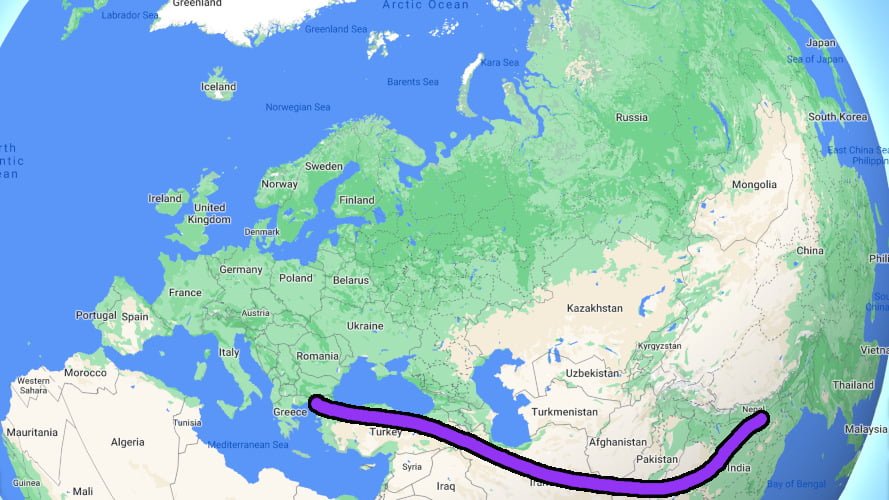
Option 3: Overland from Europe to Asia via the Hippie Trail
The classic Hippie trail deserves a mention even though it’s difficult to follow these days.
From the 1950’s to the late 1970’s, some people travelled overland from Europe to South Asia through Iran, Afghanistan and Pakistan. My old Spanish teacher did the journey in the late 1970’s and I know he has fond memories of it. However, the route is not what it used to be. Traveling through countries such as Afghanistan and Pakistan is much harder now.
US, UK and Canadian citizens can’t legally travel in Iran without a tour, although some people have found ways to get around the restrictions. Even if you get to explore Iran, traveling overland through Afghanistan and Pakistan is far more difficult – especially on public transport.
You can this guide from The Man in Seat 61 if you wish to know about the current state of the route.
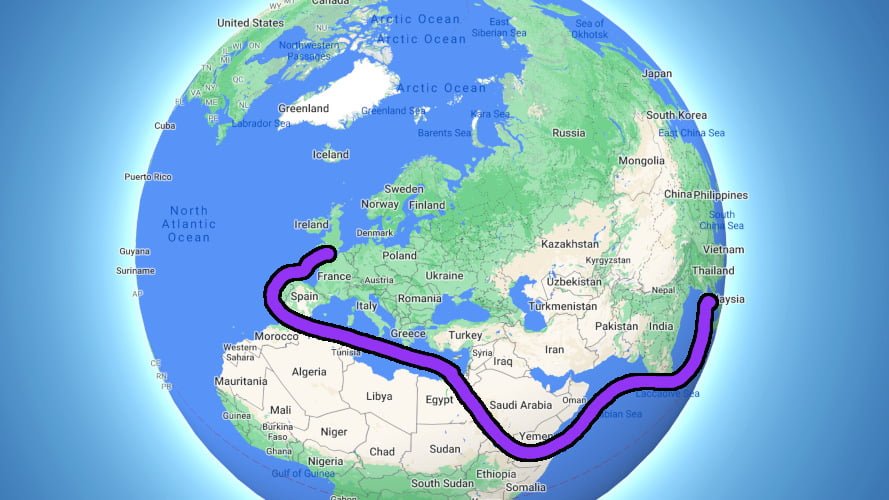
Option 4: Traveling from Europe to Asia on a Cargo Ship
See also: How to Prepare for Traveling on a Cargo Ship
Freighter travel! After traveling across the Pacific during my 2-year trip around the world, I’ve been very interested in passenger travel on cargo ships. There are several ways to get from Europe to Asia without flying on a cargo ship.
Here are three freighter travel routes from Europe to Asia. Several other journeys are also available. Most freighters make stops along the way, so you can change where you hop on and off. At the time of writing (February 2021), cargo ships didn’t take passengers because of the COVID pandemic, but that should change in the future.
The freighter journeys cost around 130-150 € per day. The price includes all meals.
- South Hampton (UK) to Port Kelang (Malaysia), 27 nights
- This weekly service gets you from Western Europe to Southeast Asia with very few stops. If you wish to continue further, you can travel all the way to China or South Korea!
- Malta to Pusan (South Korea), 36 nights
- These cargo ships follow a very similar route as the one above. However, instead of starting from UK or France, the first ports are in Italy and Malta.
- Piraeus (Greece) to Port Kelang (Malaysia), 18 nights
- Traveling on this route costs around 100 euros per day. You can also get on board in Greece to reduce the distance. This is the fastestcargo ship connection from Europe to Southeast Asia that I could find.
Many of the freighters in the Indian Ocean travel in a counter-clockwise circle. They go from Europe to Australia first via Mauritius and Réunion and only make their return journey along the coast of Asia. Because of this, you’ll find more connections from Southeast Asia to Europe than the other way around.
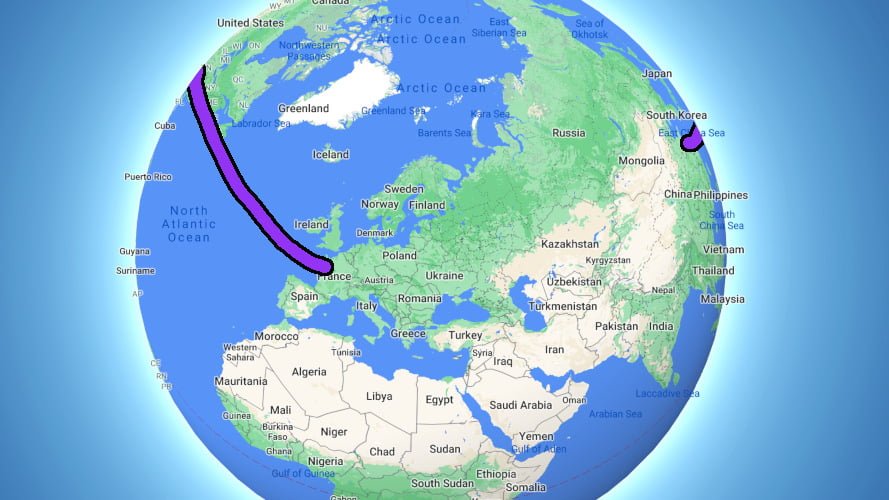
Option 5: Go West!
See also: How to Travel from Europe to America without Flying
Most guides about flightless traveling from Europe to Asia focus on routes that head east. That makes sense, but if you wish to think outside the box, you can travel from Europe to Asia without flying through North America!
I’ve written a separate guide about how to travel from Europe to North America without flying (see link above). In short, you can travel on a cargo ship or hitchhike on a sailboat across the Atlantic. Cruise ships also that make the same journey, but their CO2 emission could be 3 or 4 times bigger than those of an airplane. Avoid cruises If you want to travel as environmentally as possible.
You can travel across the USA on long distance buses such as Greyhound. You can get from coast to coast on a train as well. Canada also offers train connections across the country.
Once you reach the west coast of North America, you’ll have many ways to get to Asia. If you wish to travel on a cargo ship, you can check available departures from booking agencies such as Cargo Ship Voyages, Voyages En Cargo and Freighter Travel (NZ).
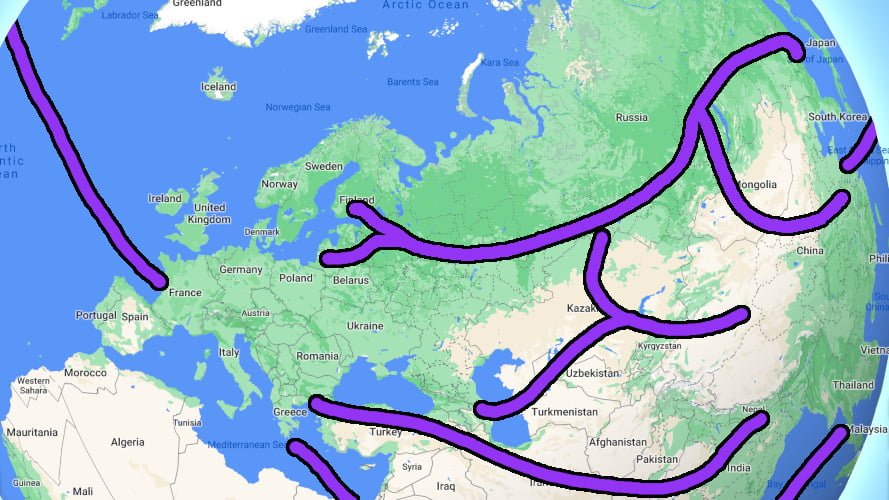
Traveling by Train from Europe to Asia
I’ve now listed several ways to travel from Europe to Asia by train and other flightless vehicles.
The list is far from complete. As I wrote this post during the COVID pandemic, some of the information might be outdated. If you have corrections or more information about flightless travel routes from Europe to Asia, please share your knowledge in the comments below.
I have some experience of trains from Europe to Asia. In 2014, me and my friend took the Trans-Siberian train to Vladivostok at the eastern end of Russia. After Vladivostok, we returned closer to Europe and switched to the Trans-Mongolian route to Beijing, China. After China, we continued our overland journey to North Korea.
I have covered our journey in the following blog posts:
- The Trans-Siberian Railway (Travel Memory #8)
- The Trans-Mongolian Railway (Travel Memory #9)
- The Great Walls of China (Travel Memory #10)
- I May Have Been to South Korea (Travel Memory #11)
- What Is It Like to Visit North Korea?
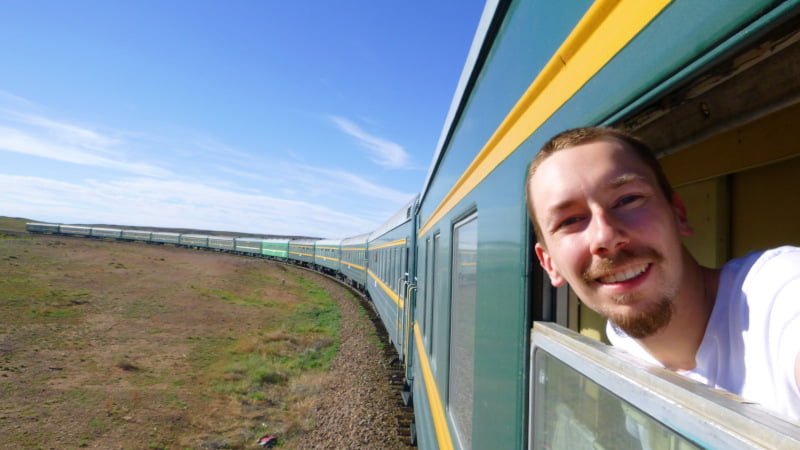
During my 2-year trip around the world, I followed my own principle which I call mostly flightless travel. In other words, I covered over half of the distance without flying. If you wish, you can do something similar on your journey. For example, you could take a train to Turkey, fly to India and continue overland by train from there.
If you do end up flying, please think about donating 10% of your ticket price to a climate charity, especially those suggested by Giving Green. Carbon offsetting is not very effective, so direct donations can make a more meaningful impact.
Safe travels!


